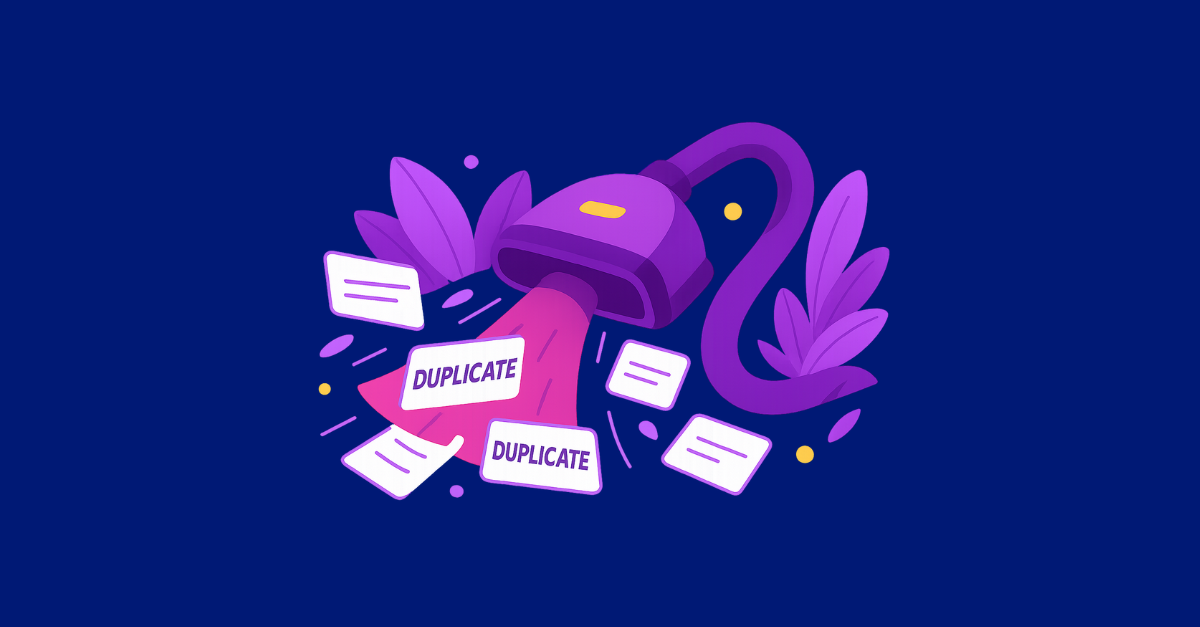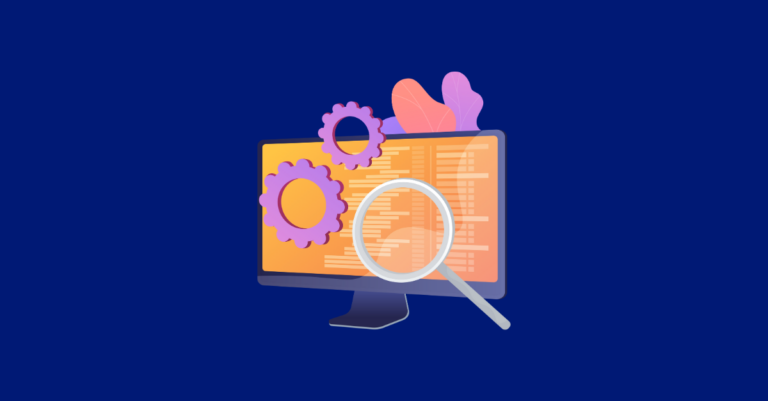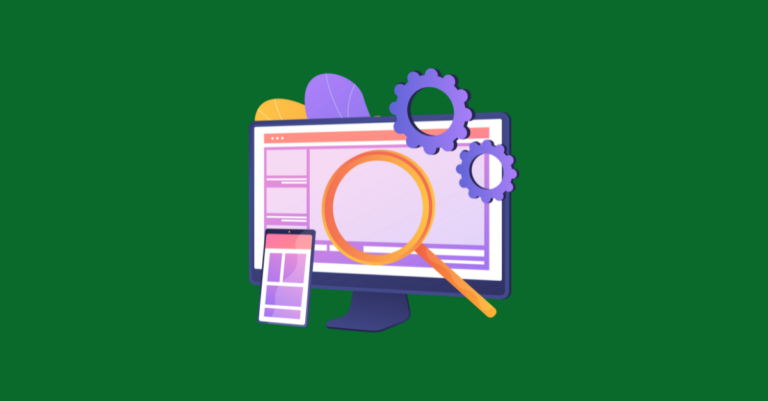What is Crawl Bloat & How Do You Fix It?
Search engines only have so much time and energy to spend crawling your website. If they waste that time on duplicate, low-value, or auto-generated URLs, your important content may never even get discovered — let alone indexed.
This problem, known as crawl bloat, can quietly hold back your site’s visibility, traffic, and performance.
In this post, we’ll break down what crawl bloat is, how it differs from index bloat, and most importantly, what you can do to keep your site clean and your crawl budget working for you.
Need help with your technical SEO? Greenlane is extremely experienced in fixing the technical issues that damage your rankings and visibility.
What Is Crawl Bloat?
Crawl bloat occurs when there are so many URLs that Google has to crawl on your site; it simply does not have the crawl budget to crawl new ones.
So, when new pages are dynamically created, site search is creating new URLs, or filtering URLs are not controlled, Google is likely going to find and crawl all of these thousands of URLs that are not only useless, but also potentially harmful to the vital content on your site!
Crawl Bloat vs Index Bloat?
While crawl bloat directly contributes to index bloat, they are somewhat different. The difference between index bloat and crawl bloat is that index bloat occurs when multiple low-quality, useless, or even accidental pages are indexed by Google, and crawl bloat occurs when these same types of URLs exist on your site and are consistently being crawled by Google, even if they’re not being indexed.
Index bloat causes problems on the SERP and even cannibalization, but crawl bloat can prevent your new, useful content from being indexed. New pages are being created, but Google is already busy crawling the existing URLs that have priority.
How Can We Avoid Crawl Bloat?
There is one sure-fire way to keep your crawl budget optimized and unclogged, and it’s very basic. Have a clean website. Avoid creating any unnecessary URLs. This can be difficult, especially for dynamically-driven sites (like e-commerce). Often, filtering or searching for products creates new URL variations without anyone being aware, so you must be vigilant.
Create indexable landing pages for your highest-value filters and link to them. For the rest, use AJAX/JS filtering that doesn’t create new crawlable URLs. Or, keep parameters but consolidate with rel=canonical or noindex. These patterns cut duplicate and low-value URLs. Also, audit for variants from sort/order, price ranges, colors, tracking params, and session IDs.
How to Check for Crawl Bloat?
You can use Google Search Console (GSC) to check if your site’s crawl budget is clogged up.
Go to the “Pages Report,” then look at the “Not Indexed Pages.” It will show you how many URLs exist on the site that are not indexed and the reasons why they are not indexed.
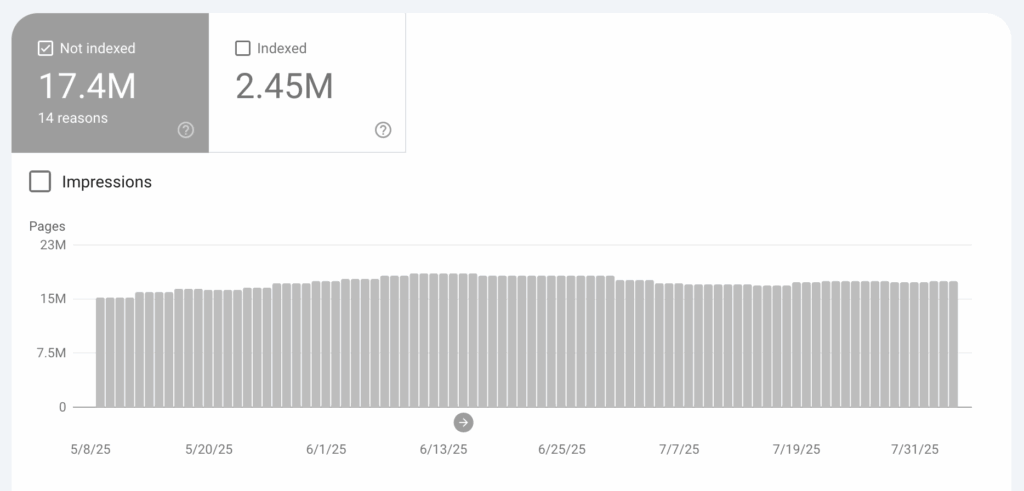
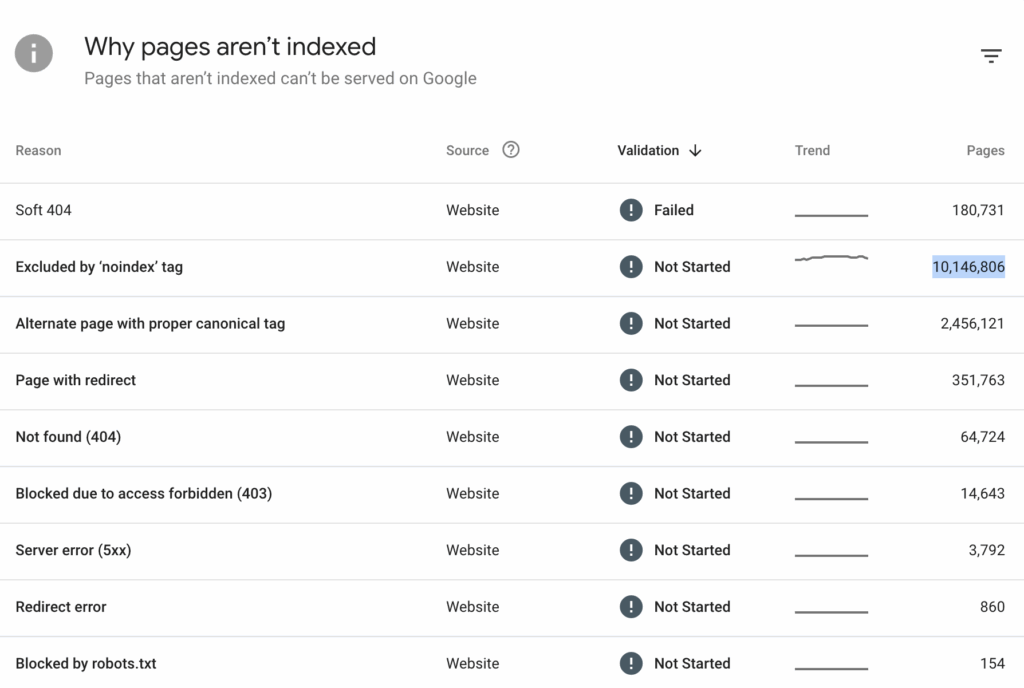
In the photo above, you can see that there are over 10M pages that are not causing index bloat since they have a “noindex” tag on them. However, they are causing crawl bloat since those 10M URLs are still getting crawled regularly by Google!
How to Optimize Crawl Budget
Limiting the creation of these URLs is hard enough, and you’ll likely need someone very skilled in web development. Helping search engines efficiently discover and accurately categorize pages is a large part of it and often requires extensive technical SEO skills.
On top of limiting URL creation, you’ll need at least these few things:
- Solid, Up-to-Date Sitemap
- Organized Internal Linking Structure
- Structured Navigation & Breadcrumbs
- Accurate & Relevant Schema
- External Links
- Simple Redirects
Think Crawl Bloat is Holding Your Site Back?
You could be right! If you’ve noticed slow indexing, declining organic visibility, or a flood of strange URLs in Google Search Console, crawl bloat may be the culprit. Left unchecked, it can stop your best content from ever reaching the search results, hurting both traffic and conversions.
That’s where Greenlane comes in. Our team specializes in Technical SEO, from diagnosing crawl and indexation issues to building scalable strategies that keep your site lean, crawlable, and optimized for growth. If you’re looking for an expert’s opinion, you’re in the right place!
Ready to make the most of your crawl budget? Get in touch with us today, and let’s clear the clutter so your site can perform at its best.

